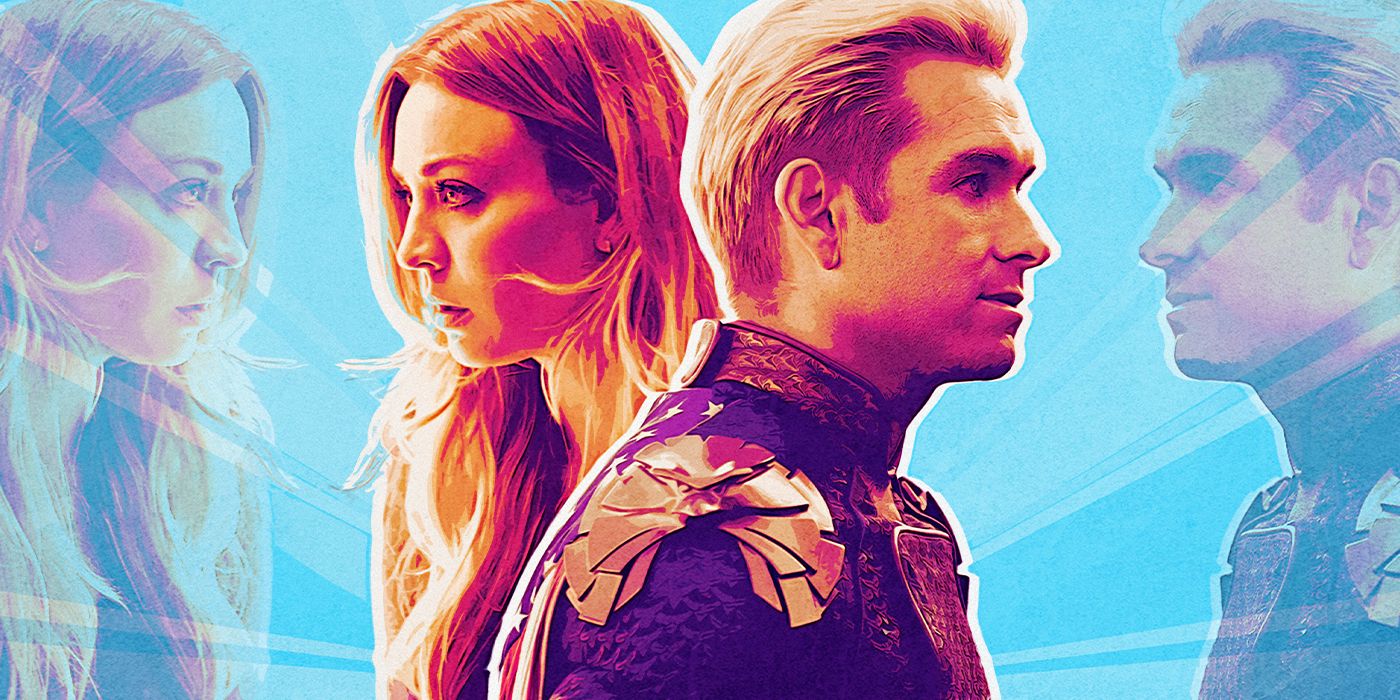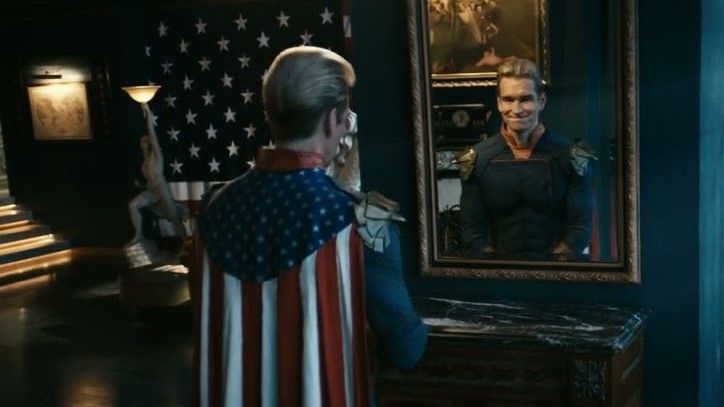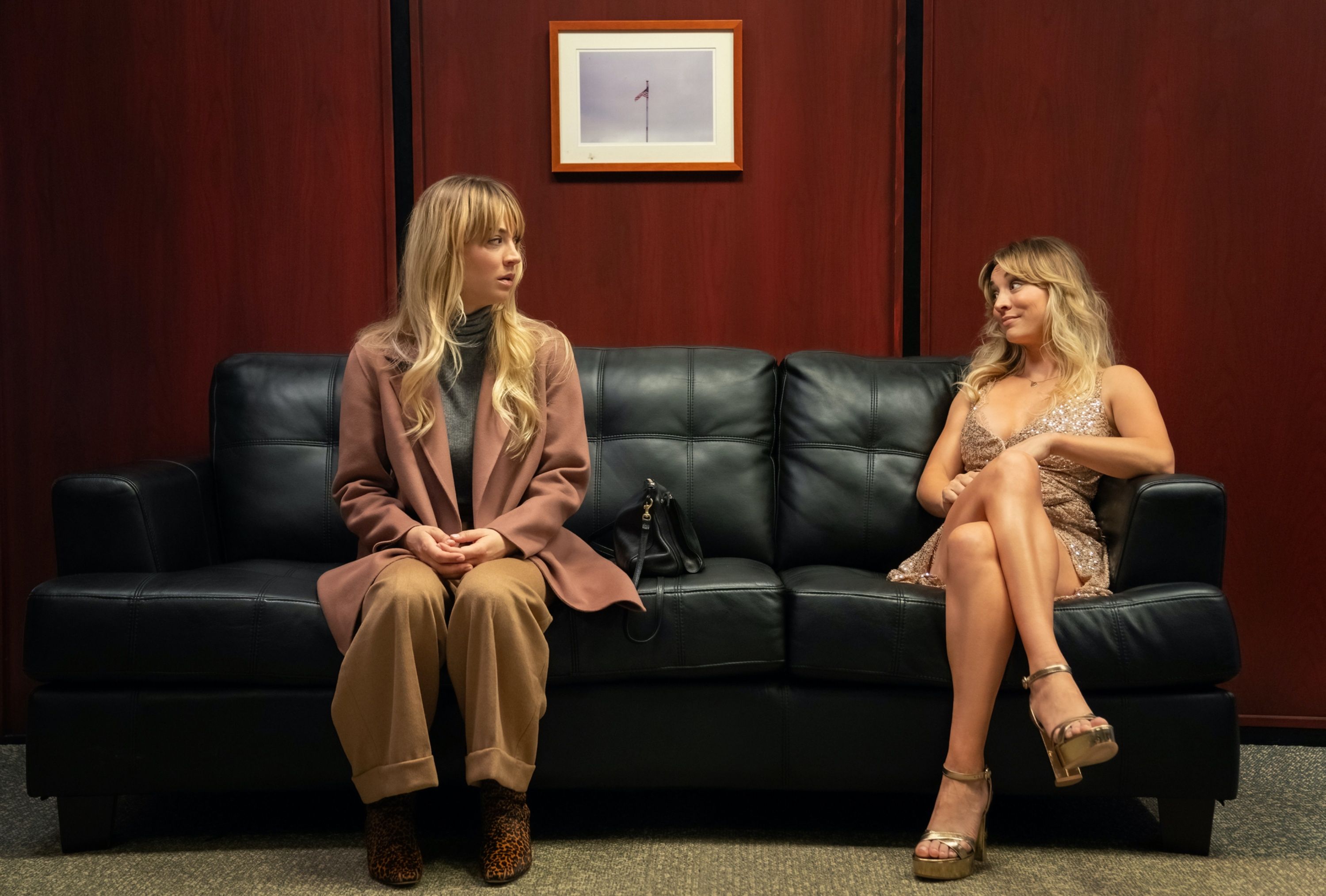HBO Max’s The Flight Attendant and Prime Video’s The Boys are two compelling series both packed with action and drama. The character work in both of these shows soars to new heights, really giving audiences a lot to sink their teeth into. Though both shows are incredible achievements in storytelling and grandiose visuals, main characters Homelander (Antony Starr) and Cassie (Kaley Cuoco) don’t seem to have much in common on the surface. One is a maniacal supervillain, one of the best antagonists TV has seen thus far. The other, a recovering alcoholic who finds herself constantly smack dab in the middle of international crimes. In the most recent season of The Boys and The Flight Attendant, both narratives make use of an excellent device to convey that these characters have gone off the deep end. In both series, Homelander and Cassie share moments with their most challenging scene partner yet: themselves.
In Season 2 of The Boys, Starr is in the company of a Supe who can change his appearance at will: Doppelganger. In order to entice him, Doppelganger first appears as Madelyn Stillwell (Elisabeth Shue), but when that persona fails to keep Homelander turned on and placated, he turns into Homelander himself — an image that a sociopath with an identity crisis can get on board with. This was the first instance that Starr acted with another version of Homelander on The Boys, and it was definitely an impressive feat that allowed viewers a lot of insight into what makes Homelander tick.
In Season 3, we see this technique once again, but this time, Starr shares the scene not with another character posing as his likeness, but with his own reflection in the mirror. This back and forth that he has with an intolerant, tough version of himself accomplishes a more profound understanding of Homelander with great success. The Homelander that speaks to the mirrored version of himself is allowed to express his fears and weaknesses. He’s reaching out to this unattainable version of himself for guidance and strength because he has no one else to turn to. He is so exhausted from holding himself to this impossible standard of being able to live without love and acceptance, and he can only let that facade down for his own reflection. For only a moment, Mirror Homelander shows him a kind of tenderness and kindness, he assures him that he’ll look out for him as he’s always done in the past, he even uses terms of endearment like “Tiger” when addressing his real-life counterpart.
This exchange, however, quickly takes on a more sinister tone. A life without love has made Homelander rotten to the core, and the side of him that yearns for ultimate power revels in that loneliness and wants to leverage it as fuel to his fire. He wants to cut the “anemic, shriveled, human” side of himself “out like a cancer”. There is a large part of Homelander that is attached to those basic needs and wants desperately for them to be fulfilled. It is only through this scene that a more poignant insight into his pain is finally explored through his perspective, as opposed to being observed by an outsider. In order to truly hate Homelander as we’re intended to, we need to understand all aspects of his flaws. Playing two characters in the same scene isn’t unfamiliar territory for Starr, who played twins in the New Zealand drama, Outrageous Fortune.
Cassie is no stranger to retreating to the mind to sort out traumatic events of her past. In Season 1 of The Flight Attendant, Cassie’s “Mind Palace” consisted of her and murder victim, Alex Sokolov (Michiel Huisman) being trapped together until she was able to sort through her demons regarding her late father. After Cassie begins her recovery journey from alcoholism, head trauma from an explosion sends her right back into the Mind Palace for Season 2, but this time she faces off against multiple versions of herself. Showrunner and creator Steve Yockey notes how this angle on the Mind Palace differs from sharing scenes with Alex in Season 1; that having to “engage with and wrestle different versions of herself is a huge part of the bedrock of recovery”. For showrunner Natalie Chaidez, Cassie’s doubles are a manifestation of the theme that Cassie must accept all sides of herself. As opposed to chasing away her fears and anxieties with drinking or an exciting job at the CIA, Cassie must face her shortcomings head-first. As she and the audience come to understand what all of these visions represent, she must make the decision to stop pushing the imperfect versions of herself away or pretend that they don’t still exist in some way.
Both characters struggle with separating aspects of themselves into compartments: parts they wish to keep performing, and parts they want to shrink and fade away. For Cassie, it’s her reckless, codependent, imperfect side. For Homelander, it’s his needy, empty, helpless side. This is why whenever Cassie and Homelander interact with these hallucinations, it’s almost as though they’re interacting with an entirely different entity separate from themselves. This omnipresent cultivation of their deepest insecurities speaks to them as though they were disobedient insubordinates who make the same mistakes over and over again. The hallucinations possess intimate knowledge of their counterparts and use it to twist the knife when forcing them to face their worst fears. Their goal is to convince the person standing before them that they’re weak; that they need these dark manifestations in order to survive and cope. When in actuality, they’d be a lot better off letting them go. Cassie learns to do this by the end of the season. Homelander, well, what fun would that be?
The power dynamics at play between Cassie and her Mind Palace Doubles versus Homelander and his reflection are especially interesting considering that Cassie is the hero of her story and Homelander is undeniably a villain. They both struggle with the same inadequacies and are both devolving further and further into uncontrollable chaos and insanity as the season progresses. How does this device manage to draw parallels between characters that are so fundamentally different and serve different purposes to the casts of characters they belong to? The act of self-examination is, in itself, extremely intimate. Every barrier between a character’s innermost thoughts and the audience is broken down in these moments. Despite their differences, both characters slip into these hallucinations because they are running from themselves and are losing control over their perfectly structured facades. A crack in the armor revealing itself to the audience is a very vulnerable moment for both character and actor. Antony Starr and Kaley Cuoco pull it off with unparalleled success.
The Flight Attendant and The Boys both employ the same Acting With Yourself device to perfection, even though they are displayed so differently across both shows: The Boys is only for a fleeting moment, The Flight Attendant is over the entire season, Cassie’s scenes with herself inspire sympathy and Homelander induces fear. The use of doubles requires dedication across the board, from the DOPs and camera operators to editors, stunt doubles and actors. In both instances, these teams were firing on all cylinders to produce exceptional scenes. When used effectively, a character simultaneously exploring multiple versions of themselves is a great way to incorporate exposition and raise the stakes of their distress.



